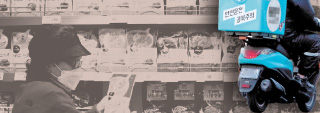The new normal after the virus
KANG HYE-RANThe author is the deputy editor of the popular culture team of the JoongAng Ilbo.
Scars and chaos from the Covid-19 are deep. A picnicker who visited the Sansuyu Village to view spring blossom has been tested positive. Shopping malls are empty and pharmacies selling face masks are crowded. College students taking online classes are complaining about the situation. People working from home are struggling with young children as the new school year has been delayed and lament about how they have to constantly cook.
“When can we go back to the routine?” As the Covid-19 crisis lasts longer, people wish to go back to the normal routine. Unfortunately, experts are skeptical. According to a report by Imperial College London’s Professor Neil Ferguson’s team published on March 16, the best option is to maintain social distance and slow down the spread of the virus.
Social distancing means everyone reducing contact with others by decreasing 75 percent of school, work and household activities. For example, you would meet a friend once instead of four times. Whenever intensive care hospitalization surges, the infection rate should be lowered through social distancing. Until when? Until the “unknown future” when a vaccine is developed or a considerable portion of mankind becomes immune.

MIT Technology Review’s editor-in-chief Gideon Lichfield shares the position. In an article titled “We’re not going back to normal” on March 17, he argued “This isn’t a temporary disruption. It’s the start of a completely different way of life,” and people should learn to live in the state of pandemic.
What will happen to our lives when the old routine does not return? First, industrial changes are inevitable. Tourism, which was highlighted as the industry without smokestack, may lose its attraction. “At home” industries such as at-home workouts will grow along with the increase of one-person households. More restaurants will focus on delivery and takeout rather than sit-down service.
Changes in child care structure, the restructuring of work and life and the adjustment of income and spending of individuals are dramatic and ominous.
Protecting the vulnerable — the first ones to be exposed to the wave — will be the challenge. We need the wisdom to prepare for the “new normal.”










with the Korea JoongAng Daily
To write comments, please log in to one of the accounts.
Standards Board Policy (0/250자)